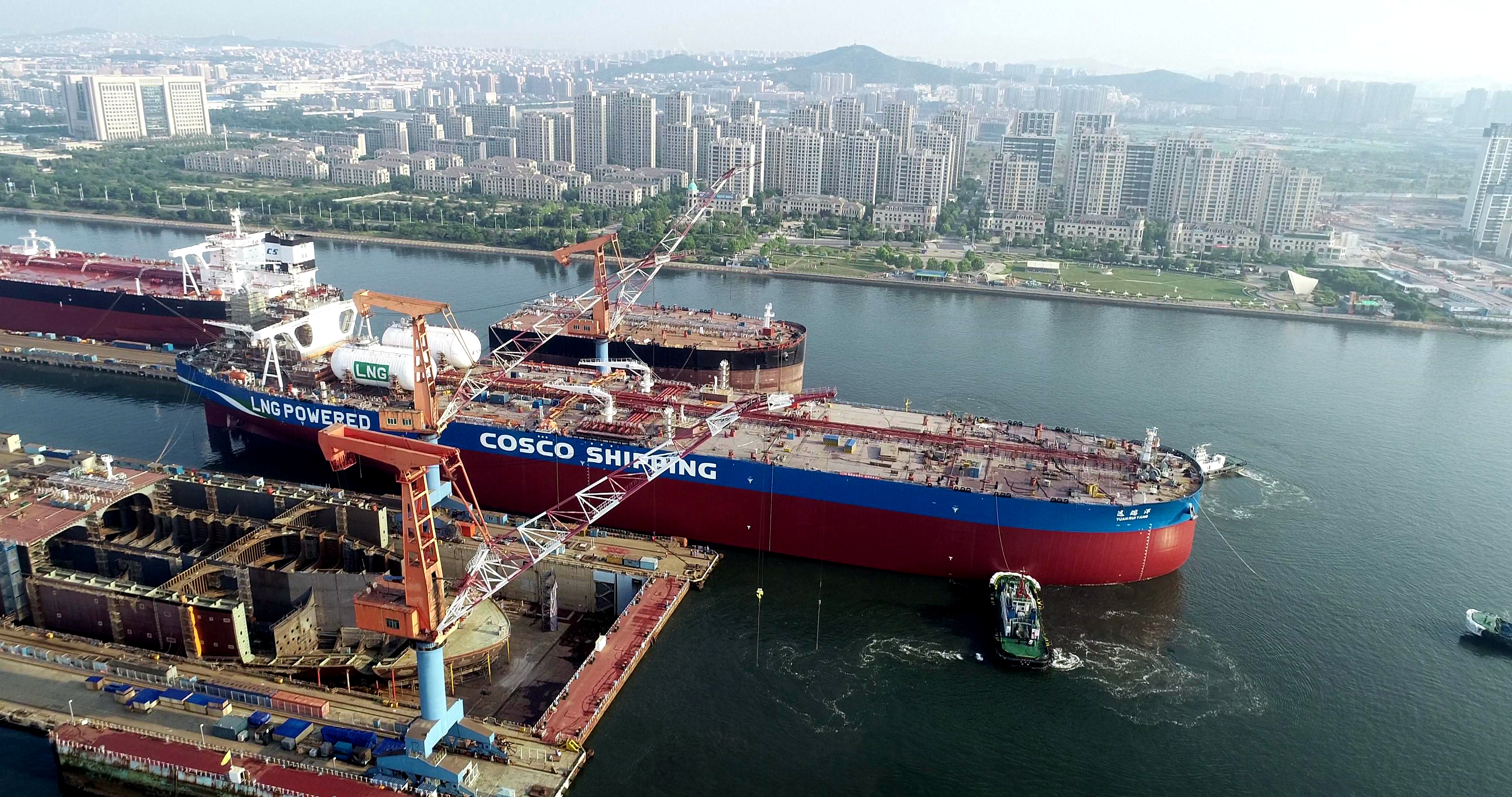|

The global first duel-fuel LNG VLCC No. 91, which was built by DSIC for COSCO Shipping Energy Transportation Co., Ltd, has completed the underwater building work, and went for a sea trial on 3rd Sept. The vessel has a total length of 332.6m, width of 60m, depth of 30.5m, design draft of 20.5m, service speed of 15 knots and load capacity of 318K ton. This vessel takes LNG as the main fuel, supplemented by fuel oil. The propulsion system adopts the WINGD low-pressure double-fuel main engine, double-fuel generator and duel-fuel boiler. The daily fuel gas system adopts a single-equipment and single-pipe design, which has improved significantly the safety of gas use as well as the shipowner’s flexibility on equipment use. The main engine and generator are configured with LPSCR. The emission of CO2 has met the EEDI Phase III requirements; and the emission of nitrogen oxide has met the requirements of Nox Tier III. Moreover, it has met HCSR (Harmonized Common Structure Rules), has provided the list of hazardous substance in accordance EU directives and has meet i-Ship (E) (smart energy efficiency) requirements. This vessel adopts a straight bow design and the stern contour has also been optimized and is designed with a large (10.6m in diameter) propeller to achieve the efficient match of vessel, machinery and propeller.
It further boosts its advantage in saving energy and reducing consumption. The structural design adopts for the first time corrosion-resistant steel to replace PSPC coating. Thus, the structure has met the high-safety requirements of double-fuel power system and has streamlined the processes and improved effectively the productivity on site. The LNG gas storage system of this vessel adopts a C-tank design. One LNG feeding station is installed respectively at the portside and starboard. The feeding rate is 1500m3/hour, which makes the feeding operation an easy job for the shipowner. The gas supply and supplementary systems meet IGF rules and SGMF requirements. Under the fuel gas mode, the vessel’s cruising range could reach 12000 knots. The total cruising range of fuel oil and fuel gas is 24000 knots. During the navigation, the vessel’s daily gas consumption is 60 ton and daily oil consumption is 74t. EEDI (Energy Efficiency Design Index) is 36% lower than the baseline. It was the first time for DSIC to handle with this vessel’s gas supply system, C-tank, and corrosion-resistant material, as well as many other systems, equipment and materials, which have created many difficulties for the production. To ensure the orderly production, DSIC has organized technical training and exchange meetings in early period of the production, which has laid a solid technical foundation for the staff.
During the production, managers were assigned with specific duties to ensure the safety and proper management of the engine room, deck, pump and all other areas. All staff involved in the shipbuilding have worked hard to overcome difficulties and ensured that the milestone plans were achieved. Before the sea trial, DSIC has communicated actively with the shipowner to understand the concerns of the shipowner and been fully prepared to ensure the success of the sea trial. |

